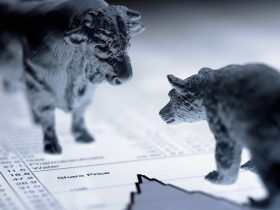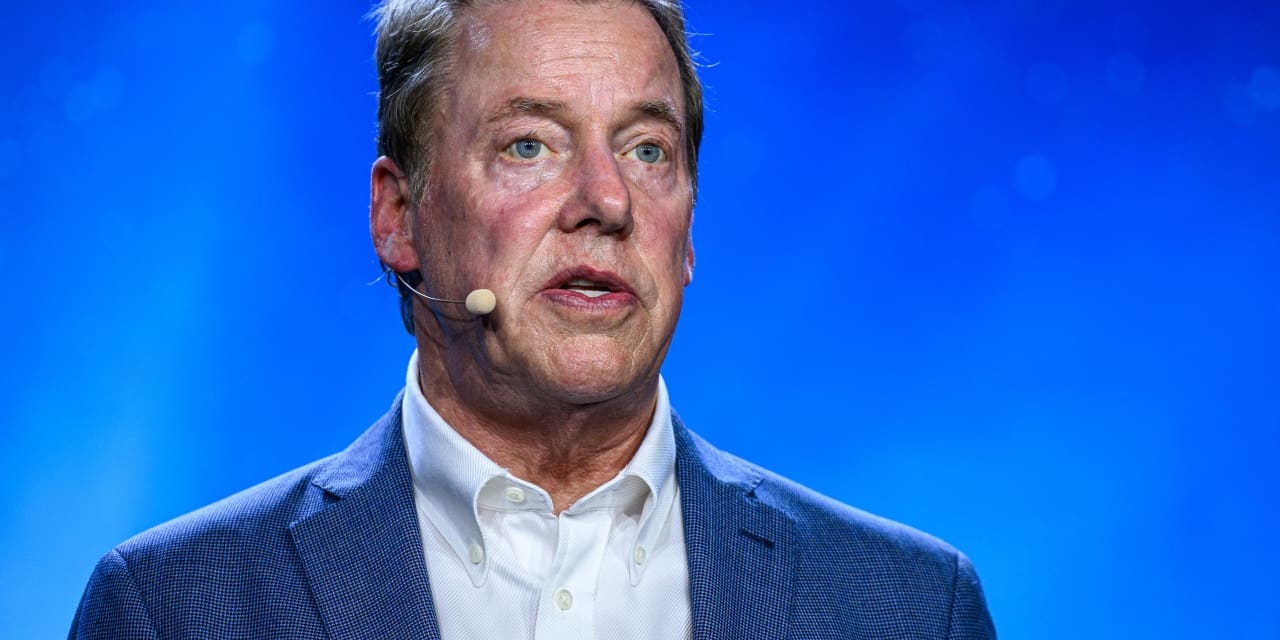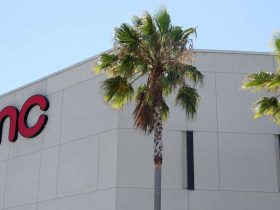In the back and forth between
Ford Motor
and the United Auto Workers, Monday was Ford’s turn to return serve.
Ford (ticker: F) Executive Chairman William Clay Ford Jr., great-grandson of founder Henry Ford, had a very different message for the union than what members have been hearing from UAW President Shawn Fain. Ford Motor isn’t the enemy, but there are adversaries in the car business, the chairman said.
“This is not Ford versus the UAW, it should be Ford and the UAW versus
Toyota,
Honda,
Tesla,
and all the Chinese companies that want to enter our home market,” said Ford, pointing out he has been involved in every UAW negotiation since 1982. “We need to come together to bring an end to these acrimonious talks.”
The talk can be re-watched here.
Acrimonious is a fair description. Fain has taken a more aggressive public tone, even saying once that the auto makers believe UAW employees are dumb. “They look at me and they see some redneck from Indiana,” said Fain on Oct. 6. “They look at you and see somebody they would never have over for dinner.”
Beyond any difference in tone, the Ford chairman has a point. The company is trying to win back market share lost over the past 40 years as the industry transitions to electric vehicles. Producing EVs profitably is key to that goal and it will take a collaboration between workers and management to beat the mostly nonunion players in the industry such as Tesla.
“If we seized this moment it will mean jobs, profit-sharing, and security and growth and prosperity for all of us,” he said. “The price of failure should be clear to everyone.”
Around 1982, Ford’s U.S. market share was about 21%. Today it is about 14%. The Detroit Three auto makers of Ford,
General Motors
(GM), and Chrysler
Stellantis
(STLA) accounted for about 75% of the U.S. market in the early 1980s. Today that number is about 40%. A lot of that business has gone to
Toyota Motor
(TM),
Honda
(HMC), and
Hyundai Motor
(005380.Korea), which account for about 34% of the U.S. market today, up from about 10% around 1982.
Tesla has about 4% of the U.S. market for new cars.
Fain disagreed with Ford’s remarks.
“It’s not the UAW and Ford against foreign automakers. It’s autoworkers everywhere against corporate greed,” said Fain in part of an emailed statement. “If Ford wants to be the all-American auto company, they can pay all-American wages and benefits. Workers at Tesla, Toyota, Honda, and others are not the enemy—they’re the UAW members of the future.”
The UAW strike is now a month old. Some 33,000 UAW workers at the Detroit Three are on strike out of a total of about 145,000. Ford’s portion of the 33,000 is almost 17,000, or about half of the total.
Of course, the union has a point too. Wage increases in recent years have trailed inflation. What’s more, the union made significant concessions around 2007 that helped the companies generate more consistent profits.
Specific details of Ford’s offers to the union haven’t been disclosed, but investors have gotten hints from the union and Ford itself. On the table so far are wage increases in the range of 20% over four years, reduced time to advance through pay scales, higher top rates for newer employees, enhanced retirement benefits, and more paid time off, among other things.
It hasn’t been enough to end the strike. How battery-plant workers will be treated is one sticking point. The union would like them treated like assembly-line workers, while Ford prefers to classify them as suppliers. Ford didn’t immediately respond to a request for comment.
The strike has weighed on Ford and
General Motors
(GM). Coming into Monday trading, their shares were down about 21% and 27%, respectively, over the past three months, while the
S&P 500
was down only about 4%.
Stellantis
(STLA) shares are up about 4%, but the auto maker is a more global company, and its shares are cheaper than the other two stocks. Stellantis stock trades for less than four times estimated 2024 earnings. Ford and GM shares trade for less than seven and five times, respectively.
Ford stock was up 1% on Monday, while the
S&P 500
and
Dow Jones Industrial Average
were up 1.2% and 1%, respectively.
Write to Al Root at [email protected]
Read the full article here











Leave a Reply